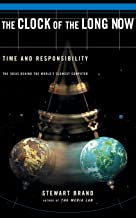Some Notable Activists and Organizations
A Few Books That Particularly Impacted Me
ENVIRONMENT

Drawdown: The Most Comprehensive Plan Ever Proposed to Reverse Global Warming
Paul Hawken, Ed. (Penguin)

The Ecological Self
Freya Mathews (Barnes and Noble Books)

The Ethics of Environmental Concern
Robin Attfield (U. of Georgia Press)

The Legacy of Luna
Julia Hill (HarperCollins)

Science as a Contact Sport: Inside the Battle to Save Earth’s Climate
Prof. Stephen H. Schneider (Nat Geo)

Should Trees Have Standing?: Toward Legal Rights for Natural Objects
Prof. Christopher D. Stone (U. Southern California)

Toward a Transpersonal Ecology: Developing New Foundations for Environmentalism
Warwick Fox (Shambhala)
THINKING

The Clock of the Long Now: Time and Responsibility
Stewart Brand (Basic Books)

Don’t Think of an Elephant!: Know your Values and Frame the Debate
George Lakoff (Chelsea Green)

Flow: The Psychology of Optimal Experience
Mihaly Csikszentmihalyi (Harper Perennial)

New World, New Mind: Moving Toward Conscious Evolution
Robert Ornstein and Paul Ehrlich (Simon & Schuster)

Power Politics
Arundhati Roy (South End Press)

The Quark and the Jaguar: Adventures in the Simple and The Complex
Prof. Murray Gell-Mann (Freeman)
ACTIVISM
The three main categories of Activism are: Protest, Non-Cooperation and Interference. Here are just a few real-world examples of strategies and tactics in each category.
PROTEST
Protest is a method of activism that makes your opposition known to a relevant audience. It can sometimes be done anonymously, or it can be quite public. Examples include:
NON-COOPERATION
Non-Cooperation is the retreat from or rejection of a system, mandate, consent or other type of forced involvement imposed by a government, company or institution. Examples include:
INTERVENTION
Intervention is the most direct, disruptive and destructive activism. Examples include:
























